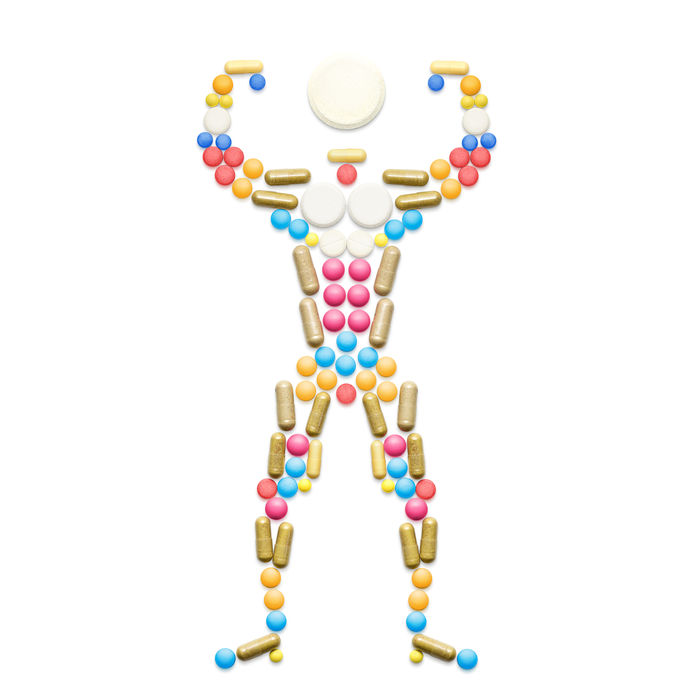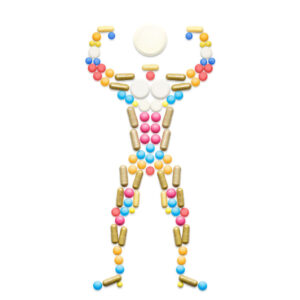Women, not just men, can suffer ill effects from depressed testosterone levels, also known as “Low T” syndrome. Gender equality has long been at the epicenter of many societal debates, it now appears as if the human body itself is sending us a message in regard to hormone regulation.
Mother Nature’s Gender Bias
The hormone testosterone belongs to a group of chemicals known as androgens. Women generally have about fifteen-to-twentyfold lower concentrations of circulating testosterone than men. Regardless of gender, however, testosterone plays a key role in the development and maintenance of muscle mass, strength, energy levels, body composition, red blood cell production, and bone density. For women, in particular, the maintenance of bone density and muscle mass is important, as both of these tend to deteriorate with age.
Mediating Menopause
Testosterone levels will naturally wane as a woman ages; upon reaching menopause, the ovaries cease producing the formerly higher levels of hormones which have helped the female body maintain healthy sexual function. This holds true for both testosterone and estrogen. During this period of life, many females choose hormone replacement therapy (HRT), to ease bothersome menopausal side effects.
Unfortunately, taking oral estrogen regularly can actually lower a female’s already depressed testosterone levels. When circulating blood levels dip too low, many females experience undesirable symptoms, such as sluggishness, muscle weakness, weight gain and overall fatigue.
The Science Speaks for Itself
While it is commonly accepted that women begin to gain body fat 10 years before they experience menopause and that many women gain weight when taking birth control pills, doctors often overlook the role that testosterone can play in helping to ameliorate this situation. In truth, doctors and researchers still do not fully understand how low testosterone levels affect women, or how best to treat the deficiency. This is likely because many physicians are uninformed about the use of testosterone replacement therapy in women.
Recent scientific studies, such as one reported in the Journal of Clinical Endocrinology and Metabolism, have shown that when given low doses of synthetic analogues of testosterone (nandrolone), obese women lost more body fat and subcutaneous abdominal fat, and gained more muscle mass, than those females who were given a placebo. The study participants followed a low-calorie diet but did not change their exercise habits; after nine months, those women taking nandrolone had lost twice the body fat and gained six pounds of lean muscle mass compared to women in the placebo group.
Another study conducted by the North American Menopause Society tested the effects of supplemental testosterone on sexual function, body composition, muscle performance, and physical performance. The 71 subjects involved in this research study were post-menopausal women who had previously undergone a hysterectomy and had circulating testosterone levels less than 31 ng/dL or 3.5 pg/mL.
These women received standardized transdermal estradiol regimen during the twelve-week study, and randomly received weekly intramuscular injections of either a placebo or testosterone. Results demonstrated that those women who received testosterone showed significant strides in lean mass, chest-press power, and loaded stair-climber power. In addition, the rate of adverse events remained very low.
Too Much of a Good Thing
Overcompensating with excess testosterone supplementation may result in unwanted side effects such as acne, deepening of the voice, growth of facial and chest hair, lower HDL (“good”) cholesterol levels, and male-pattern baldness.
There is also some concern that testosterone therapy may contribute to the development of breast cancer and heart disease, although this has not been conclusively proven. A large study of a new testosterone gel for women is currently evaluating these risks.
A Drug-Free Solution
What might we suggest for clients seeking to maximize their potential without resorting to supplemental hormones? According to Jade Teta, ND, an integrative physician and fitness coach from North Carolina, “Weight training is the only activity that creates hormonal changes that help both men and women burn fat while maintaining or gaining muscle.”
Indeed, an appropriate strength training regimen has been shown to stimulate production of sex hormones and help rebalance them for both genders. It is notable however that strength cycles that continue for eight weeks or longer seem to be the ideal impetus for endocrine adaptation for increased testosterone levels.
While it extends past a personal trainer’s scope of practice to assess hormone levels in clients, suggesting their medical professionals monitor levels can help establish a starting point. As clients progress through their strength cycles, elevations in testosterone should become evident in the second or third phases of training.
Proper Exercise Selection
Several of the most rudimentary strength movements have the potential for increasing testosterone levels:
- Squat– Every variation of the squat engages several large muscles simultaneously.
- Leg Press – If clients are unaccustomed to using machines as part of their workouts, it might serve them well to incorporate the leg press, which hits the lower body somewhat differently than a squat
- Deadlift– This exercise is another compound movement that recruits the larger muscles of the lower body.
For optimal results, strive for program designs that incorporate strength training and cardiovascular exercise (both high-intensity intervals such as sprinting as well as steady-state cardio). Peppering in plyometrics also will boost testosterone production.
For women, in particular, programming is the key to producing the best physiological results. Ineffective protocols can undermine hormonal responses in the female body. Educate clients about the effects of excessive cardiovascular exercise. Any form of overtraining can lower testosterone along with many other metabolic hormones.
Life Is A Balancing Act
Hormone supplementation works wonders for many athletes, both male and female. Mitigating “Low T” can help propel clients into the next level of training and refinement of body composition, including our female athletes. However, if a non-medicinal approach is preferred, a well-designed strength training regimen has the potential to keep hormonal levels well-balanced. As Ms. Teta reminds us, such workouts can “produce the changes and the look of a healthy, fit physique.”
References
https://www.ncbi.nlm.nih.gov/pubmed/11915780
http://blog.insidetracker.com/why-women-should-care-about-testosterone
https://breakingmuscle.com/fitness/how-women-should-train-for-optimal-testosterone-levels
https://breakingmuscle.com/fitness/the-role-of-testosterone-for-the-female-athlete
https://www.health.harvard.edu/womens-health/testosterone-therapy-is-it-for-women
https://www.lifeextension.com/magazine/2004/4/report_test/page-01




